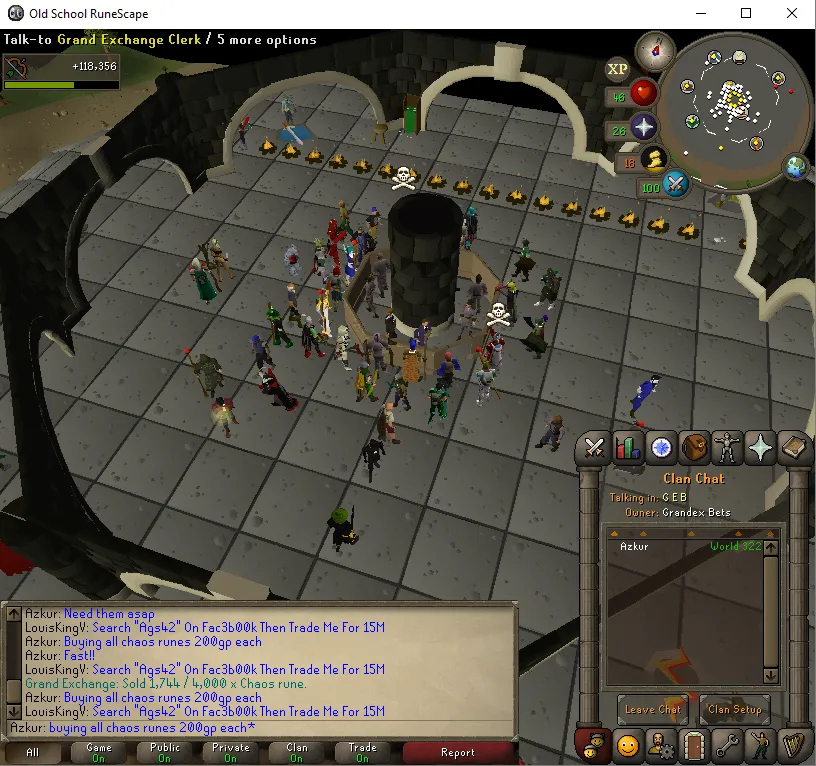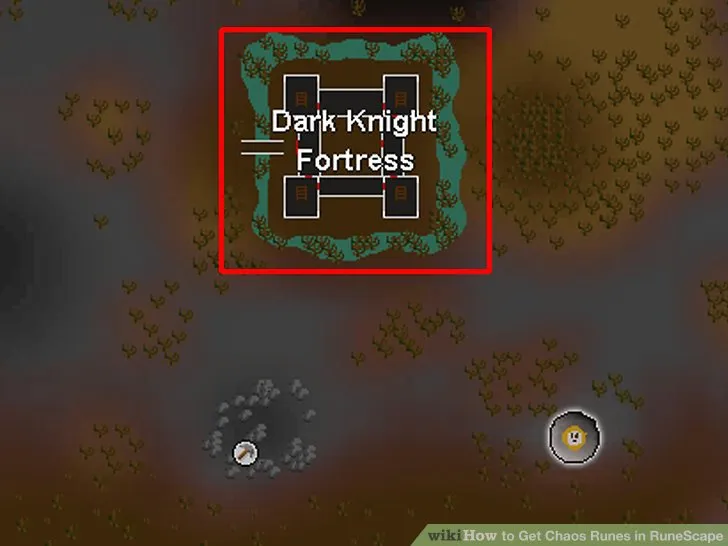Your cart is empty
Chaos Rune OSRS Price Understanding Trends and Influences

Chaos runes are a staple in Old School RuneScape (OSRS), powering low to mid-level magic spells and charging various weapons. Their price fluctuates due to game updates, player demand, and economic shifts in the Grand Exchange (GE). This blog dives into the chaos rune OSRS price, exploring its trends, influencing factors, and practical implications for players. Whether you’re a mage, a flipper, or just curious about the game’s economy, understanding chaos rune prices can give you an edge.
Chaos runes are catalytic runes used primarily for missile spells like Wind Bolt, Water Bolt, Earth Bolt, and Fire Bolt. They also charge weapons such as the Trident of the Seas, Trident of the Swamp, and Tumeken’s Shadow, making them versatile for both combat and utility. Players can craft them at the Chaos Altar with 35 Runecrafting or buy them from shops and the GE.
Key Uses of Chaos Runes
- Magic Training: Chaos runes are popular for low-cost spellcasting, especially for players training Magic.
- Weapon Charging: Essential for maintaining powerful weapons like the Trident of the Seas.
- Barbarian Assault: A unique, untradeable variant is used, but it doesn’t impact GE prices.
How Chaos Runes Are Obtained
Players acquire chaos runes through several methods:
- Runecrafting: Crafting at the Chaos Altar (level 35 Runecrafting) yields 8.5 XP per rune, doubling at level 74.
- Monster Drops: Moss giants and other Wilderness creatures drop them.
- Shops: Varrock and Port Sarim magic shops sell them, though stock is limited.
- Grand Exchange: The most common purchase method due to convenience.
Current Chaos Rune Price Trends

As of April 2025, chaos rune prices hover around 90–100 GP each, based on live GE data. However, prices have seen significant swings over the years, influenced by game updates and player behavior. For example, prices dropped to 40 GP in September 2023 but spiked to 100 GP by October due to flipping and demand surges.
Historical Price Fluctuations
Chaos rune prices have a history of volatility:
- 2009: Prices reached 190 GP before crashing when TzHaar shops stopped buying items.
- 2020: Prices fell to 55 GP as new bosses increased supply and demand dipped post-summer.
- 2023: A sudden jump from 40 GP to 100 GP was attributed to merchant flipping.
Live Price Tracking Tools
To stay updated, use these tools:
- GE Tracker: Offers real-time price graphs and flipping guides.
- OSRS Exchange: Updates prices every 30 seconds.
- RuneHQ: Provides item stats and historical data.
Factors Influencing Chaos Rune Prices
Several in-game and player-driven factors affect chaos rune prices, making them a fascinating study in OSRS’s economy.
Supply and Demand Dynamics
Chaos runes are heavily influenced by supply and demand:
- Supply: New bosses or content updates (e.g., warped sceptre release) can flood the market with runes, lowering prices.
- Demand: Magic training spikes, especially during double XP events, drive prices up.
Game Updates and New Content
Updates often shift prices:
- Warped Sceptre (2023): Increased demand for chaos runes, pushing prices higher.
- Boss Drops: Bosses like those in 2020 introduced more runes, causing price drops.
Player Behavior and Flipping
Merchants and flippers play a big role:
- Flipping: Players buy low (e.g., 45 GP) and sell high (e.g., 54 GP), exploiting tax-free trades.
- Seasonal Trends: Prices often dip post-summer as players return to work or school, reducing demand.
How Chaos Rune Prices Impact Players
Price changes affect different player types in unique ways, from mages to merchants.
For Magic Trainers
Low prices make chaos runes ideal for budget Magic training. At 90 GP, casting Fire Bolt costs roughly 360 GP per cast (with four chaos runes), offering decent XP for the cost. However, price spikes can push players toward alternative spells or methods.
For Weapon Users
Players using Trident of the Seas or similar weapons need chaos runes to charge them. A price hike from 50 GP to 100 GP doubles the cost of charges, impacting long-term bossing or slayer tasks.
For Merchants and Flippers
Chaos runes are a flipper’s dream due to their high trade volume and no GE tax. Buying at 90 GP and selling at 95 GP yields small but consistent profits, especially with bulk trades.
| Player Type | Impact of Price Increase | Impact of Price Decrease |
|---|---|---|
| Magic Trainer | Higher training costs, may switch spells | Cheaper training, more casts per GP |
| Weapon User | Increased charge costs, less bossing profit | Lower costs, more bossing uptime |
| Flipper | Higher buy-in, bigger profit margins | Lower margins, easier to buy bulk |
Tips for Navigating Chaos Rune Prices
Whether you’re buying, selling, or crafting chaos runes, these strategies can help you maximize value.
Buy Smart
Monitor Prices: Use GE Tracker to buy during dips (e.g., 80–85 GP).
Bulk Purchases: Buy chaos rune packs (100 runes) from shops if GE prices spike, though stock is limited.
Craft for Profit
Runecrafting: At level 74, crafting two chaos runes per essence doubles output. With pure essence at ~5 GP, crafting is profitable when runes exceed 50 GP.
Abyss Method: Use the Abyss for faster crafting, banking in Edgeville for efficiency.
Flip for Profit
Tax-Free Advantage: Chaos runes have no GE tax, so even 5 GP margins add up.
Timing: Buy post-update when prices crash, sell during demand spikes (e.g., new content).
Alternative Sources
Wilderness Drops: Farm moss giants for free runes, but beware PKers.
Barrows: High-reward runs (506+ potential) can yield chaos runes.
In conclusion, chaos rune OSRS prices are a dynamic reflection of the game’s economy, driven by supply, demand, and player ingenuity. By understanding trends and using smart strategies, you can turn price fluctuations to your advantage, whether you’re training Magic, charging weapons, or flipping for profit. Keep an eye on GE Tracker and stay adaptable—OSRS’s economy waits for no one.
